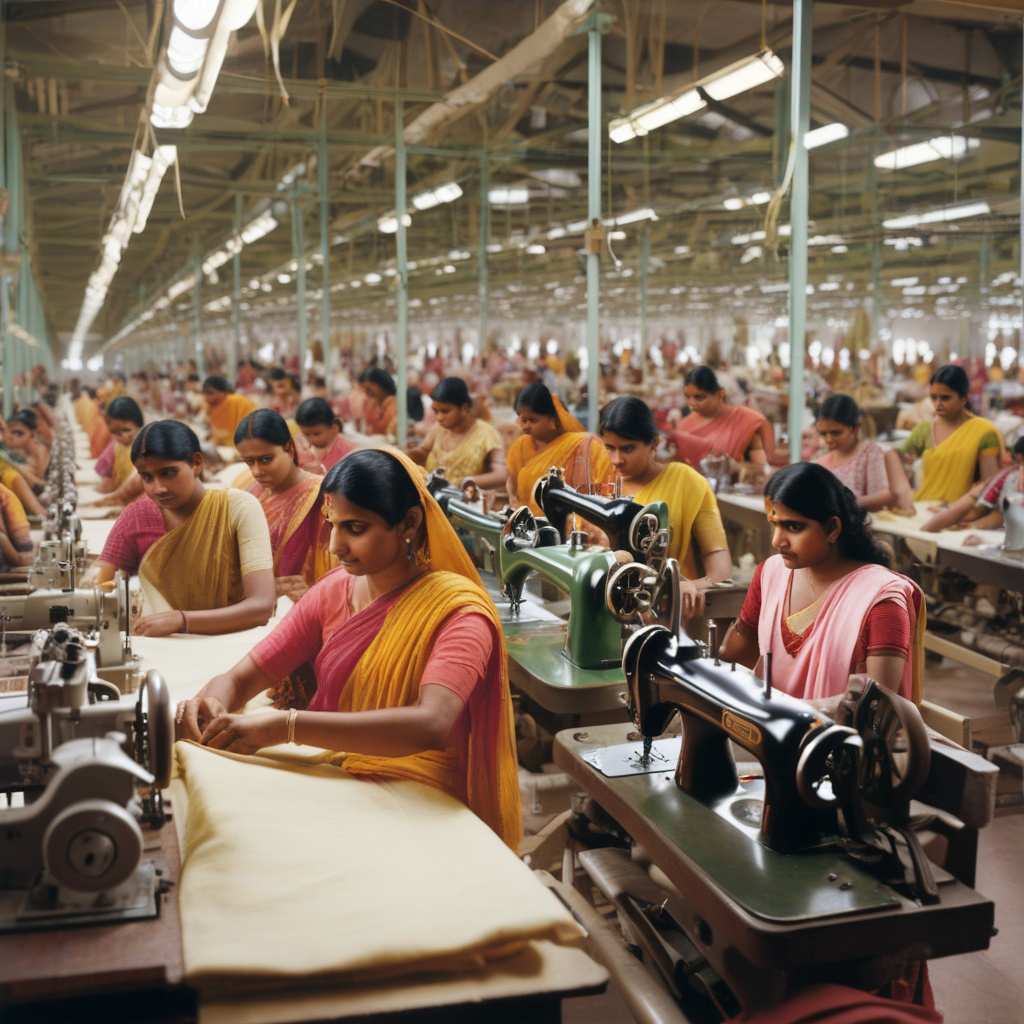Shein Seen Boosting Indian Manufacturing as U.S.-China Trade War Shakes Up Supply Chains
In the realm of fast fashion, Shein has emerged as a dominant player, captivating consumers with its trendy and affordable offerings. However, its recent strategic decision to enhance manufacturing in India signals a significant shift in its operational framework. This move comes in response to the ongoing U.S.-China trade war, which has rattled supply chains and prompted companies to reevaluate their sourcing strategies.
The trade war has created an environment of uncertainty for businesses that rely heavily on Chinese manufacturing. Tariffs imposed by the U.S. on a range of Chinese goods have not only increased costs but also disrupted traditional supply chains. As a result, companies are seeking alternative manufacturing locations to mitigate risks and maintain competitiveness. Shein, recognized for its agile response to market trends, is now looking towards India as a viable solution.
The decision to ramp up production in India is strategic for several reasons. One of the most compelling factors is the country’s burgeoning manufacturing sector, which has been gaining traction in recent years. India offers a vast pool of skilled labor and a growing infrastructure that appeals to international brands. By investing in Indian manufacturing, Shein can tap into this resource and reduce its reliance on Chinese factories.
Moreover, India’s government has actively promoted initiatives aimed at boosting local manufacturing. The “Make in India” campaign encourages foreign investment and supports domestic production across various industries, including textiles and garments. This alignment of interests creates a conducive environment for Shein to establish a robust manufacturing presence in the country.
Additionally, the geographical advantage of manufacturing in India cannot be overlooked. The proximity to key markets in Asia, Europe, and the Middle East allows for quicker turnaround times and reduced shipping costs. This logistical benefit is vital for Shein, which thrives on rapid inventory turnover and responsiveness to fashion trends. By diversifying its manufacturing base, Shein can enhance its supply chain flexibility and better serve its global customer base.
Implementation of local manufacturing also aligns with the growing consumer demand for sustainability and ethical production practices. As consumers become more conscious of where their products come from, brands that prioritize ethical sourcing and local manufacturing may gain a competitive edge. Shein’s investment in Indian manufacturing could position it favorably in the eyes of consumers who value transparency and sustainability in the fashion industry.
However, transitioning manufacturing operations to India is not without its challenges. While the country offers numerous advantages, it also faces infrastructural limitations and regulatory hurdles that could impact production efficiency. Issues such as power supply inconsistencies, transportation bottlenecks, and bureaucratic red tape can pose significant obstacles for companies looking to scale operations quickly.
In response to these challenges, Shein will likely need to forge strong partnerships with local manufacturers and invest in capacity-building initiatives. Collaboration with established Indian textile producers could facilitate knowledge transfer and improve production quality. Furthermore, investing in technology and innovation will be essential for optimizing operations and ensuring that Shein meets its standards for quality and speed.
Moreover, the shift towards Indian manufacturing may also generate positive economic ripple effects within the country. As Shein ramps up its operations, it could create numerous job opportunities in the textile and garment sectors. This could lead to skill development and empower local workers, contributing to the overall growth of India’s manufacturing landscape.
In conclusion, Shein’s strategic pivot to boost manufacturing in India is a timely response to the challenges posed by the U.S.-China trade war. By diversifying its supply chain and capitalizing on India’s manufacturing potential, Shein aims to strengthen its competitive position in the fast fashion industry. As the company navigates the complexities of this transition, it will be crucial to address potential challenges while leveraging local resources and partnerships. This move not only reflects Shein’s adaptability but also underscores the broader shifts in global supply chains as companies seek resilience in an uncertain trade environment.
#Shein #Manufacturing #India #FastFashion #SupplyChain
